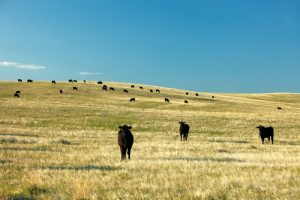
The U.S. Department of Agriculture authorized emergency grazing on Conservation Reserve Program (CRP) lands on Friday in response to extreme drought after requests made by U.S. Sens. John Hoeven (R-ND), Mike Rounds (R-SD) and U.S. Rep. Kristi Noem (R-SD).
USDA granted emergency grazing on CRP lands in Montana, North Dakota and South Dakota through Sept. 30 in response to forage shortages there brought on by extreme drought conditions.
“We appreciate USDA opening up CRP lands for grazing to help our ranchers who have been hard hit by drought conditions,” said Hoeven, who pressed Secretary of Agriculture Sonny Perdue to take the action in a bipartisan letter earlier this month. “We will continue working with USDA to provide assistance, including emergency haying, to help support our producers through these challenging times.”
The USDA said if the drought continues, feed supplies will decline and stock water will become scarce, stressing both livestock and producers. Without alternative forage options like grazing CRP lands, livestock producers could potentially face having to liquidate their herds.
Rounds, who wrote the USDA last week seeking assistance for counties in areas hit by drought, thanked Perdue for acting quickly to give ranchers flexibility to feed their herds.
“Opening up additional CRP acres for grazing will provide South Dakota producers with much-needed relief from the ongoing drought,” Rounds said. “It is a great first step, and I will continue working with my colleagues to make certain our producers are equipped with all the tools possible to manage these difficult conditions.”
Noem also recently made a personal request for Perdue to grant emergency grazing.
“With many already forced to downsize their herds due to inadequate access to feed, it was imperative the USDA move quickly to provide relief,” Noem said. “I am grateful to Secretary Perdue for following through on my calls for greater access to CRP and for his commitment to the needs of South Dakota ranchers. I’m hopeful this decision gives them more options at a time when help is much needed.”



